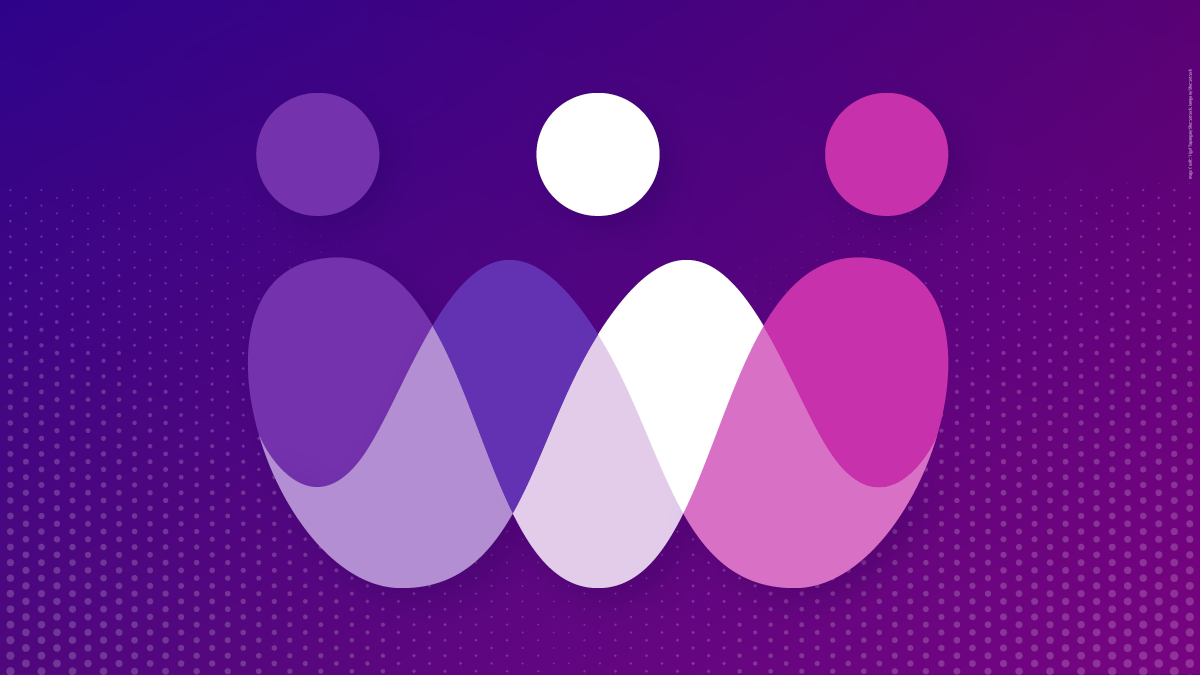-
About
Our Story
back- Our Mission
- Our Leadershio
- Accessibility
- Careers
- Diversity, Equity, Inclusion
- Learning Science
- Sustainability
Our Solutions
back
-
Community
Community
back- Newsroom
- Webinars on Demand
- Digital Community
- The Institute at Macmillan Learning
- English Community
- Psychology Community
- History Community
- Communication Community
- College Success Community
- Economics Community
- Institutional Solutions Community
- Nutrition Community
- Lab Solutions Community
- STEM Community
- Newsroom
- Macmillan Community
- :
- Digital Community
- :
- Macmillan Learning Digital Blog
Macmillan Learning Digital Blog
Options
- Mark all as New
- Mark all as Read
- Float this item to the top
- Subscribe
- Bookmark
- Subscribe to RSS Feed
Macmillan Learning Digital Blog
NEW ACHIEVE FEATURES RELEASED: As you adapt to changes in learning, Achieve does too. Explore how Achieve's newest features help strengthen student engagement and learning - Explore What's New.
Showing articles with label Achieve.
Show all articles
Macmillan Employee
10-07-2025
07:01 PM
Every semester seems to bring something new, whether it be new tech, new tools, or new student needs. Instructors are navigating shifting expectations while trying to protect their time and support increasingly diverse learners. The challenge? Adapting without burning out. Achieve is designed to make that possible.
Instructors using Achieve aren’t rebuilding their courses from scratch. They’re enhancing what already works. The platform simplifies the hard stuff: setting up assignments, organizing content, delivering feedback, and spotting where students are struggling. Features like reflection surveys help surface student needs early, while real-time analytics show which concepts need reteaching before it’s too late. That saves time on guesswork and makes office hours more effective.
For instructors who want to actively engage students but don’t have time to redesign their entire class, Achieve offers scalable, flexible tools. Think low-stakes quizzes that grade themselves, adaptive learning that tailors question difficulty, and iClicker polling that keeps students participating without extra prep. These aren’t bells and whistles. They’re practical teaching tools that increase retention and participation. Students come to class more prepared and more confident.
And it’s not just about saving time. It’s about reaching more students. Achieve’s design supports equity by offering multiple content formats, accessible design, and low-barrier engagement strategies. Instructors report stronger outcomes not only for their highest performers, but also for students who might otherwise slip through the cracks. That includes first-gen students, multilingual learners, and students balancing work and school.
Recent updates to Achieve also reflect what instructors have asked for. One example is the new integration with Respondus LockDown Browser, which helps prevent digital cheating during assessments. It’s easy to activate, works within the Achieve environment, and gives instructors more control and peace of mind, without adding complexity for students.
Education is changing fast. Instructors don’t need a whole new system every semester. They need something that adapts with them. Achieve helps make that happen, whether it’s through easier course setup, time-saving assessments, or tools that meet students where they are. When everything feels like it’s shifting, it’s good to have something in your corner that’s built to bend — not break.
Want to learn more? Explore What’s New in Achieve.
... View more
Labels
-
Achieve
0
0
268
Macmillan Employee
10-07-2025
06:49 PM
If you’re like most instructors, you spend too many evenings and weekends buried under the kind of work that takes you away from the real joy of teaching: connecting with students. Prep, grading, troubleshooting tech… it all adds up.
That’s where Achieve can help. It’s designed to handle the busywork, so you can focus your time and energy where it matters most. Here are three practical ways Achieve saves you time (and sanity).
1. Let students get feedback in the moment
Instead of answering dozens of emails about problem sets or clarifying the same concept over and over, Achieve provides immediate feedback when students answer incorrectly. They see where they went wrong, can try again, and arrive at class better prepared.
Your win: fewer interruptions, more confident students, and less reteaching material you've already covered.
2. Stop hand-grading what doesn’t need to be hand-graded
Essays and projects may need your insight, but basic practice and comprehension checks? Achieve’s auto-graded assignments handle those for you. You still get visibility into how students are doing, but without spending hours grading routine work.
Your win: meaningful time saved, without sacrificing the quality of feedback.
3. Streamline your classroom logistics
Two things that always seem to take more time than they should: managing your LMS and taking attendance. Achieve integrates directly with your LMS, so grades sync automatically (no double entry). And with iClicker included at no cost with most Achieve courses, you can take attendance in seconds, while also boosting engagement with quick polls and questions.
Your win: less clicking, fewer spreadsheets, and smoother classes.
The bottom line
Time is one of the most valuable resources you have as an educator. With features like instant feedback, auto-grading, LMS integration, and built-in iClicker attendance, Achieve is built to reduce the grind so you can reclaim your time and your focus.
... View more
Labels
-
Achieve
0
0
493
Expert
10-07-2025
01:51 PM
Think about being dropped in the middle of a national forest. As you start looking around, how do you think you would feel? Perhaps you will be amazed at the wonders of the natural world and feel extremely free as you can walk anywhere you want without any trails or signs to guide you. On the other hand, you may feel overwhelmed, lost, and even downright despaired due to the lack of structure and defined paths to move forward. And what about the bears, mountain lions, or moose, oh my!?!
Similarly, designing a course, whether a newly-conceived elective or a bread-and-butter foundational course, can simultaneously be both exhilarating and terrifying as well (minus the wildlife). With a blank canvas of designing a course, you can take things in so many different directions, make this course all your own, and share it with your students with (hopefully) transformative outcomes. But this blank canvas can also instill feelings of fear and doubt as the seemingly unlimited potential of the course can lead you down many rabbit holes that don’t result in fruitful outcomes.
Despite these polar opposite feelings that occur, designing courses from scratch is my favorite academic pursuit, which is why I wrote a book on course design, founded my own business to help faculty design their courses and use evidence-based instructional practices to improve their student outcomes, and even made a card deck to make course design hands-on and fun! I hope that you will be able to use the following brief how-to guide to help you get started on your course design journey. And, that this will lead you towards a more engaging and impactful experience for you and your students alike.
Step 1: Start with your outcomes in mind
When starting to learn how to design any courses, I encourage you to use the principles of backward design to guide your process. Start with what your overarching learning goals are for the course (i.e. what do you want your students to be able to do!) before you think about assessments or activities and course materials.
These learning goals can be focused on content knowledge, technical skills, or affect or attitudes. Just remember that these are the big picture goals that you want your students to achieve by the end of your course and that these goals should guide all future design considerations. You’ll also do the same for each lesson of your course by designing learning objectives too.
Step 2: See what else is already out there
You don’t have to start your course design journey from scratch. Get inspiration from materials that are already out there by searching the web, looking for published papers and course materials in journals and databases, asking your colleagues for their course materials, and checking in with your favorite generative AI tool for ideas. There is nothing wrong with using existing materials and ideas so that you don’t have to completely reinvent the wheel… unless it is a brand-spanking new course that is!
Step 3: Decide on types of summative assessments
Once you have your learning goals in place, you need to figure out how you will know if students’ have accomplished them or not. Now is the time to start to brainstorm the types of assessments you will use for this critical matter. Consider using low-stakes pre-class reading quizzes, in-class problem sets and activities, after-class homework and higher-stakes quizzes, exams, projects, essays, and reports, among others. Try to include some authentic assessments which are matched to real-world goals or expectations that your students will encounter someday. You can also decide on a grading schema at this point.
Step 4: Plan your schedule, syllabus, lessons, assessments, and activities
Having high-quality materials for use in and out of the classroom is an important step to accomplish when learning how to design STEM courses. We all need materials to teach from and with and so now is a good time to decide on that. Do you want to create all of your own materials, use open-education resources (OER) on the web, or use those created to meet the needs of educators and students alike by an education company like Macmillan Learning? If the latter, make sure to understand the cost and make sure all of the bells and whistles are the ones you and your students actually need. Use courseware and textbook adoption rubrics such as the ones listed here to help you with this process.
The syllabus is a critical piece of the course design process and acts as a document that clearly describes your course goals, content, assessments, activities, policies, and more. Think of it as a contract between you and your students which gives them all of the information that they need to succeed and flourish in your course. While the syllabus can be designed at any time, now is a good time to start working on it as you have many of the big pieces of your course designed. You can find a syllabus template modeled off of my courses in my book.
With many of the big-picture items crossed off the design list, now it is time to actually plan the day-to-day lessons, activities, and assignments. First, write and plan out lesson-level learning objectives which state what students should be able to do for each lesson or day of class. Next, use a spreadsheet or a whiteboard or a bunch of sticky notes (whatever suits you best!) to plan out the daily and weekly schedule throughout your term.
You can find a sample scheduling template which Justin uses for his own courses in his book.
Now that you have the lesson-level learning outcomes and a schedule, you now need to design the actual assessments (e.g. pre-class reading quizzes, homework, quizzes) and activities (e.g. pre-class reading guides, in-class active learning exercises, slide decks) that you will use throughout the course. I strongly advise against making them all at once before the course starts; rather, make a couple weeks’ worth of materials which will give you a step up on the class schedule but will also allow you to adapt and make changes to future assessments and activities as the course proceeds. Check out a bunch of my materials here.
Step 5: Teach the class(!) and assess, review, reflect, iterate
Having a colleague or two (or six) take a look at your course materials and plan will give you huge insights into how your course is looking and how it might work in the wild. Having peer feedback earlier and continually throughout the course design process is ideal, but at least get some other eyeballs on your materials and plans before teaching the course for the first time. Once you are in the classroom, consider having someone come watch you teach as well as peer observation of your teaching can truly be illuminating. Learn more about the importance of peer review and getting feedback on your teaching in my book.
Once you have your course designed, ask yourself what feels right about it and what feels like it needs work. You likely won’t know for sure until you actually step foot in the classroom and actually teach the course, but use your instincts to make changes as needed. When the term is underway and you are teaching the course, assess how it is going by collecting student performance data, frequent student feedback, and peer observation feedback. Be sure to keep a “teaching journal” and reflect on each day of class and take notes of what is going well and what isn’t (because there will certainly be things that do not go swimmingly the first time). Use all of these data to make positive changes and iterate for the next term.
You got this!
If you, your colleagues, or your department would like a guide to help them on their course design journey, please reach out to Justin anytime at justin@recombinanteducation.com or check out www.recombinanteducation.com.
... View more
Labels
-
Achieve
0
0
299
Macmillan Employee
09-30-2025
01:20 PM
So you’ve got your free sample access to Achieve. Excellent. Now the big question: what do you actually do with it?
This short guide will help you explore in a way that’s meaningful, manageable, and maybe even a little fun. The goal is simple: get a true sense of what Achieve can do for you and your students without getting lost amidst the extensive content and multitude of features.
Don’t have an Achieve sample yet? Request free trial access here.
Let’s dive in.
Step One: Getting Into Achieve
Already know how to log into Achieve? Skip ahead. If not, here’s the world’s easiest three-step process:
Go to achieve.macmillanlearning.com
Click Sign In and enter your email and password
Select the Sample Course you’d like to explore
That’s it. You’re in. If you need extra help, follow these visual instructions here.
Step Two: Don’t Let the Breadth of Resources Overwhelm You
Yes, your sample course includes a lot. You’ll find content, activities, reports, tools, and more. But don’t worry. Everything is cleanly organized and clearly labeled. Think of it like walking into a really well-stocked supply closet.
Wondering where to begin? You might benefit from starting with the content.
Curious how authors cover a concept? Open a chapter in the e-Book and take a look around.
Want to see what reading options students will actually have at their disposal? Turn on the Read Aloud feature or adjust the reader preferences (night mode, fonts, text size).
Prefer to mark things up? Highlight and take notes right in the e-Book.
Once you’re familiar with the content, move on to Achieve’s research-backed features. These are the tools instructors tell us make a big difference.
Step Three: Explore Core Features
LearningCurve Adaptive Quizzing
Take a look through a short pre-class quiz (already built for you).
Or try one yourself to see how students experience personalized practice.
LearningCurve can help students come prepared without creating extra grading for you.
Reports
Open the reports section to see the kinds of insights you’d get about class performance.
Spot how Achieve highlights learning gaps early and clearly.
One reason so many instructors love it is that they get a “big picture” overview of student performance without having to compile that information manually.
Goal Setting & Reflection Surveys
Preview the surveys designed to help students set goals and stick to them through the duration of your course.
These surveys give students a structured way to reflect on habits and goals at the start, which boosts accountability and confidence later.
Discipline-Specific Tools
Every field has unique needs. Explore the tools that bring your subject to life like…
Interactive graphing in Economics
Diagnostic tests in Chemistry
Discipline-specific study tools across Biology, Psychology, Math, and more
Wondering what Achieve has to offer for your discipline? Click the relevant link below to learn about special features for you and your students.
Anatomy & Physiology Astronomy Biochemistry Biology Chemistry College Success Communication Economics English Environmental Science Geography Geology History Mathematics Nutrition and Health Physics Psychology Statistics
Step Four? Determine Your Next Best Step.
By now you’ve seen a bit of how Achieve works and what it can offer. You write the journey. Here a few next steps for you to consider: Here are three next steps to continue:
Keep exploring with a personalized demo. Schedule a guided walkthrough with an Achieve expert to explore the features most relevant to your course and teaching style.
Prefer a more guided approach? Explore Achieve through an interactive guided tour at your own pace.
Ready to adopt Achieve? Connect with your representative to bring Achieve into your classroom and get your students started.
And when you’re ready, setting up your first course in Achieve is a breeze.
Achieve is designed to be easy for educators to use in any course. Don’t just take our word for it: watch what instructors say here.
This Getting Started Guide for Instructors will help you get up and running in no time.
... View more
Labels
-
Achieve
0
0
372
Macmillan Employee
09-23-2025
08:50 AM
Teaching is deeply rewarding, but let’s be honest, it can also be overwhelming. Between grading, lesson planning, and keeping students engaged, the workload adds up fast. That’s where a little help from AI can make all the difference.
These seven incredible educators shared their favorite AI prompts that make their teaching lives just a bit easier. They’re not outsourcing their creativity; they’re amplifying it. And in the process, they’re modeling for students how to use AI thoughtfully and responsibly.
1. Christin Monroe, Chemistry – Landmark College
Prompt: “Suggest creative project ideas for debunking a scientifically (specifically chemistry related) inaccurate popular culture reference.”
Christin invites AI into the brainstorming process to help students uncover the science (and the myths) hidden in pop culture. She explains:
“It is great because it gives suggested prompts for different types of popular culture references and helps students both brainstorm and get experience with ethical AI usage. I share the results of the prompt with students to get them started.”
The result? Students get excited about chemistry by connecting it to the shows, movies, and media they already love.
2. Delane (Blake) Simon, M.A., College Success – Houston City College
Prompt: “Create a clear and concise grading rubric for this assignment worth 100 points.”
Blake adds a pro tip: include assignment instructions and expectations in the prompt. He leans on Microsoft Copilot for this task:
“My preferred AI co-conspirator is Copilot, which can convert the rubric into a Word document to other file type and is a part of the Microsoft Office 365 suite!”
This approach streamlines grading prep and ensures students get a transparent, fair framework for success.
3. Jennifer Duncan, English – Georgia State University Perimeter College
Prompt: “Hey Bot! Rewrite this assignment prompt using TILT principles of teaching and learning. Include clear tasks and criteria for success as well as a self-assessment rubric for students.”
Jennifer’s casual “Hey Bot!” prompt is deceptively powerful. By asking AI to reframe assignments using Transparency in Learning and Teaching (TILT) principles, she makes her expectations crystal clear for students.
She reminds colleagues:
“This will produce a great start, but you’ll refine the output.”
AI gives her a draft. Her teaching expertise makes it shine.
4. Julie Osland, Psychology – Siena Heights University
Prompts:
“I want a student activity where students have to label the four lobes and their function(s)...”
“Please create at least three realistic examples for the end of class Concept Check.”
Julie uses AI to bring brain science to life. From everyday scenarios (“Which brain area was working hardest while you caught that ball?”) to end-of-class concept checks, AI helps her design activities that are memorable, engaging, and rooted in students’ daily experiences.
Her approach bridges neuroscience with the real world—and her students walk away with lasting understanding.
5. Gina O’Neal-Moffitt, Psychology – Florida State University
Prompt: Explore family closeness with AI conversations on communication, support, connectedness, and control.
Gina developed an entire assignment around AI reflection. Students chat with AI on each theme, then create a video about what they discovered:
“You will engage in a series of chat conversations with ChatGPT... and then make a video about what you learned.”
By combining digital conversation with personal reflection, Gina encourages students to think critically about family dynamics while also building digital literacy.
6. Jill Bonds, English – Coalinga College
Prompt: “Take this discussion question __________(add boring discussion question) and make it specific to students in ______(insert city and college) that enjoy pop culture and responding in creative ways (besides writing).”
Jill has AI tailor discussion questions to her students’ context and interests. She even has it generate motivating student announcements with quotes and images to kick off the week. The result? Engagement jumps, and students see coursework that feels relevant to their lives.
7. You (Yes, You!)
If you’ve ever wished you had more time to design activities, explain instructions clearly, or connect assignments to student interests, these prompts are your inspiration. AI can’t replace the human connection that great teaching requires. But it can clear space for you to focus on what matters most: students.
Why These Educators Inspire Us
What makes these educators stand out isn’t just their creativity—it’s their courage to experiment. They’re proving that AI, when used thoughtfully, can:
Save time on repetitive tasks.
Clarify expectations for students.
Spark creativity in lesson planning.
Build digital literacy and ethical awareness.
By sharing their favorite prompts, they remind us that AI isn’t about doing less teaching—it’s about creating space to do the best teaching.
So go ahead: borrow a prompt, tweak it for your classroom, and see what happens. Teaching is hard work, but with the right tools—and a community of inspiring educators—you don’t have to do it alone.
... View more
Labels
-
Achieve
0
0
461
Macmillan Employee
09-23-2025
08:39 AM
Rethinking What Support Means
Higher education is happening against a backdrop that feels markedly different than even a decade ago. Both students and educators are navigating an environment defined by turbulence: an anti-intellectual movement that questions the very value of college, widespread loneliness and disconnection, the addictive pull of social media, uncertainty about the job market awaiting graduates, and a collective fear about the future, including climate change, political division, and social instability.
In this context, “support” has often meant trying to soften the blows: extending deadlines, adding reminders, or easing requirements. These come from a place of care, but they can inadvertently reinforce the belief that students are not capable of managing on their own. What if true support meant preparing students to stand strong in the face of uncertainty? What if the most compassionate thing we can do is help them build the muscles of accountability and self-reliance they will need far beyond the classroom?
This reframed approach does not mean educators do less. It means they do something more lasting: empower students to trust themselves. The pages ahead explore why accountability matters, how to lay the groundwork for it, and how this shift benefits both learners and instructors in these uniquely challenging times.
Why Student Accountability Matters
Consider Marcus, a junior who regularly scrolls through social media late into the night, watching a steady stream of headlines about climate disasters and wars. He drags himself into class tired, distracted, and unsure whether his degree will even “matter” in the long run. Without accountability structures, Marcus slips behind… not because he isn’t a smart young man or because he doesn’t care, but because fear and disconnection sap his motivation.
When students like Marcus learn to take ownership of their learning, they gain valuable skills that can help them navigate trying times through their entire lives. They begin to experience agency in a world where so much feels uncontrollable. For educators, that shift reduces the exhausting work of constant micromanagement and opens space for more meaningful teaching moments.
So what can educators do? The following isn’t an exhaustive list. It isn’t a perfect list. It’s just a few ideas that any instructor can use with their students, including you.
Set the Foundation with Clear Expectations
When the world outside feels uncertain, clarity inside the classroom is a gift. Students cannot thrive amid vague or shifting expectations.
Use syllabi and rubrics as roadmaps. A syllabus can signal stability: This is what you can count on in this space. Rubrics help demystify what success looks like.
Model expectations. Show examples of strong work, and name what makes them effective.
Revisit regularly. Expectations should be a living conversation, not a one-time handout.
Your Syllabus, Their Roadmap
When Sofia, a first-year student, confided to her professor that “everything feels unpredictable,” the professor gently pointed to the syllabus: “In this class, here’s what you can expect from me, and here’s what I’ll expect from you.” For Sofia, that clarity provided a rare sense of stability.
Design Structures That Promote Responsibility
In times of considerable distraction and distress, students need structures that help them practice accountability in tangible ways.
Checklists or milestone deadlines provide pacing when self-discipline is hard to summon.
Self-assessments prompt students to pause, reflect, and take ownership before seeking external validation.
Collaborative goal-setting or progress tracking reinforces that responsibility is shared.
Student choice in assignments nurtures agency in an era where students often feel powerless.
In one class, a professor asked students to co-create deadlines for a major project. At first, they were skeptical, but when mid-semester pressures mounted, those student-chosen checkpoints became anchors. They learned not just time management, but the deeper skill of honoring commitments they set for themselves.
Foster Resilience Through Encouragement, Not Enabling
Students and educators alike are weary of crisis after crisis. It’s tempting to over-function for students, but this often undermines resilience.
Normalize struggle. Acknowledge openly that learning (and living) in this era is hard. Struggle doesn’t mean failure; it means growth is happening.
Offer empowering feedback. Ask questions that help students think critically, rather than fixing every error.
Celebrate small wins. In a climate of doom-scrolling and fear, small victories matter.
After failing a lab report, Alex emailed his professor saying, “Maybe I’m just not cut out for science.” Instead of excusing the assignment, the professor responded: “Let’s look at what you did well and what you can try differently.” That shift helped Alex see mistakes not as evidence of inadequacy but as part of the learning process.
How This Shift Supports You as an Instructor
Educators are not immune to the cultural forces students are facing. Faculty, too, feel the weight of political pressures, declining trust in institutions, and the burnout of carrying students through tough times.
Reframing support as accountability helps protect educators’ own well-being. It allows them to reclaim their role as guides rather than fixers, to focus less on constant troubleshooting and more on authentic engagement. Over time, this shift can foster classrooms where both educators and learners feel more grounded, less overwhelmed, and more hopeful.
A Win-Win Approach
In an era marked by loneliness, fear, and uncertainty, accountability is not about burdening students. It’s about equipping them to meet the future with courage. Helping students take ownership is one of the most enduring forms of care we can offer.
This shift doesn’t have to happen all at once. Start small: add a reflective self-assessment, make expectations clearer, or celebrate a moment of student initiative.
Because in these turbulent times, accountability isn’t just a skill. It’s a lifeline.
... View more
Labels
-
Achieve
1
0
1,644
Macmillan Employee
09-23-2025
08:30 AM
When was the last time your students took a moment to reflect on their own progress?
Help your students take ownership by setting weekly goals and reflecting on their progress. This simple habit can transform how your students approach their learning and even how they view their own success.
Setting their own goals allows students to take more responsibility for their progress, which builds self-regulation. Additionally, reflecting on past achievements gives students a sense of accomplishment, boosting their motivation and encouraging them to keep pushing forward. Reflection helps students identify what works and what doesn’t, increasing their persistence and enabling them to try new strategies and keep going when things get tough.
This isn’t just theory, studies show that goal-setting and reflection are key factors in improving student outcomes.
Instead of waiting until the end of the semester to assess student progress, try using Achieve’s Goal-Setting and Reflection Surveys. Have students set weekly learning goals, revisit them regularly, and reflect on what worked. This gives both you and your students a clear picture of progress and areas for improvement while helping them stay motivated and engaged.
Getting students into the habit of setting and reflecting on goals isn’t just a nice-to-have—it’s a game changer for their learning experience. Give it a try, and watch how quickly they take ownership of their growth.
... View more
Labels
-
Achieve
0
0
444
Macmillan Employee
09-23-2025
08:22 AM
How often do students ask, “Why are we doing this assignment?” It’s a fair question—and one that can be answered with a small but powerful design tweak.
By making learning goals visible and tying them directly to each week’s tasks, you give students clarity and purpose. Instead of assignments feeling like busywork, they see how each activity moves them closer to mastering a course objective.
Alignment helps students connect the dots between goals and practice. It builds motivation by showing the value of each task and creates a more intentional course structure, benefiting both you and your students.
Implementation can be as simple as adding a short note in your syllabus or LMS module.
For example: “This week’s work supports Objective #2: Interpret data and draw conclusions.”
That one sentence can shift how students perceive the week’s workload from disconnected tasks to steps in a larger learning journey.
The next time you prep a module, try adding explicit links between objectives and activities. It’s a small change that can make a big difference in how your students engage with your course.
... View more
Labels
-
Achieve
0
0
417
Macmillan Employee
09-23-2025
08:19 AM
We’ve all been there, you start teaching a new topic only to realize half the class is lost and the other half is bored. The problem? It’s easy to assume students are beginning from the same place, when in reality, their skills and knowledge levels can vary widely.
A simple solution is to start with a quick skills inventory or diagnostic quiz. Instead of guessing, you get a realistic snapshot of where students are actually starting.
This approach works because it prevents the frustration that comes from teaching at the wrong level by allowing you to tailor support, whether that means grouping students strategically or offering targeted refreshers. Additionally, students gain awareness of their own strengths and gaps, which builds metacognition.
If you’re using Achieve, many courses already include built-in diagnostic quizzes. These can flag gaps in foundational knowledge and point students to just-in-time support. For example, you might direct a student to a short refresher module before diving into more complex material.
Starting with data instead of assumptions helps you meet students where they are and helps them feel seen in the process.
Before your next unit, consider giving a short skills check. You’ll save yourself time reteaching later, and students will be better prepared to move forward with confidence.
... View more
Labels
-
Achieve
0
0
360
Macmillan Employee
09-23-2025
08:14 AM
It’s no secret that attention drifts during lectures. The good news? It doesn’t have to take a ton of effort to bring it back.
One of the simplest strategies is weaving in short, two-minute polls or scenarios that invite students to predict, vote, or weigh in. These quick breaks not only re-focus attention but also give students a chance to apply concepts before you move on.
Interactive moments create active learning opportunities in real time, as students stay more engaged when they’re asked to make decisions instead of just listening, which also provides immediate feedback on what they understand and where they’re stuck.
Implementation can be easy with tools like iClicker or even a show of hands. For example, ask students to vote on how they’d solve a problem or interpret a dataset. Then, instead of immediately revealing the correct answer, let them discuss their reasoning in pairs or small groups.
That extra step transforms a quick poll into a lively conversation. Students explain their thinking, hear new perspectives, and stay invested in what comes next.
Try sprinkling one or two polls into your next lecture. You might be surprised at how much energy a short pause can add to the room.
... View more
Labels
-
Achieve
0
0
1,249
Macmillan Employee
09-23-2025
08:12 AM
Are you worried that AI might make students passive learners? Here’s a simple way to flip that concern into an opportunity.
Instead of banning generative AI from your classroom, consider using it as a thought partner. By sharing an AI-generated response to a relevant question, you can invite students to step into the role of evaluator and editor.
Engaging in critique rather than passive consumption enhances active learning for students. This process strengthens their metacognition as they ask themselves what makes an answer strong or weak. Additionally, it fosters the habit of questioning sources, an essential skill in our AI-driven world.
Here’s what it can look like in practice: give students a short AI-generated essay or answer to a prompt and ask, “What would you improve or challenge? What reasoning is missing?”
Suddenly, the assignment shifts from “What’s the right answer?” to “How do we know this answer is sound?” That’s where deeper thinking happens.
The next time you’re designing a discussion or low-stakes activity, try pairing AI with student critique. You’ll not only keep them engaged, but also help them develop the critical mindset they’ll need long after your course ends.
... View more
Labels
-
Achieve
0
0
683
Macmillan Employee
09-23-2025
08:04 AM
When was the last time a student said an exam question actually helped them learn? Too often, assessments feel like hurdles—boxes to check before moving on. But assessments can do more than measure—they can teach.
When you frame your questions in real-world or discipline-specific contexts, students stop asking “Why am I doing this?” and start practicing the skills they’ll use beyond your classroom. Instead of cramming facts, they’re applying knowledge in authentic ways.
The payoff is twofold:
For students: they see purpose, which boosts engagement.
For you: you get clearer insight into whether they can transfer knowledge, not just memorize.
Try this shift: replace one of your usual multiple-choice item with a scenario. For example: “How would a chemist/educator/economist approach this situation?”
That small reframe invites students to think like practitioners, not test-takers. The next time you write an exam, add even one real-world angle—you’ll be surprised how much more authentic (and revealing) your assessments become.
... View more
Labels
-
Achieve
0
0
780
Macmillan Employee
03-28-2025
09:04 AM
What happens when we stop grading just for accuracy and start grading for learning? In this thoughtful Coffee with Colleagues conversation, instructors shared practical strategies for shifting from traditional grading to a feedback-rich, growth-minded approach. Learn how to encourage risk-taking, support neurodiverse learners, and implement ungrading techniques that prioritize student progress over perfection. Explore the full summary here!
... View more
Labels
-
Achieve
-
Assessment
0
1
959
Macmillan Employee
03-28-2025
09:01 AM
Data isn't just for administrators—it’s for instructors who want to make every class session count. In this session, educators unpacked how Achieve’s powerful analytics tools can help track engagement, identify at-risk students, and fine-tune instruction in real time. Whether you’re looking to boost student outcomes or simply streamline your workflow, this conversation is full of actionable ideas. Get the insights here!
... View more
Labels
-
Achieve
0
0
670
Macmillan Employee
10-23-2024
10:14 AM
Discover the transformative power of authentic assessment with the enlightening video, "Unlocking Potential: Achieve and Authentic Assessment." Join educational experts as they delve into dynamic strategies that revolutionize student learning. Erika Martinez from the University of South Florida reveals the innovative use of in-class response systems like iClicker, which not only capture real-time insights but fundamentally elevate students' learning experiences. Christin Monroe of Landmark College presents an intriguing argument for unlimited assessment attempts, inviting students to dive deeply into the material and refine their understanding in a supportive environment. Additionally, Matthew Ingram of Dakota State University discusses the flexible nature of learning curve quizzes that tailor progress tracking and inspire tailored instructional changes. Tune in to witness how Macmillan Learning tools champion engaging and effective assessments, empowering educators to unlock every student's potential. Click below to watch!
... View more
Labels
-
Achieve
-
Assessment
0
0
930
Topics
-
Achieve
60 -
Achieve Read & Practice
1 -
Achieve Release Notes
1 -
Assessment
7 -
Flipping the Classroom
5 -
Getting Started
14 -
LearningCurve
3 -
Sapling Learning
1
Popular Posts
“Test” Is Not A Curse Word
alyssa_del-vall
Macmillan Employee
5
4
Letting Students Do the Teaching (and Learning) with Collaborative Learning Activities
Symphonie
Macmillan Employee
3
2
You Are NOT Tech Support!
becky_anderson
Macmillan Employee
2
0








